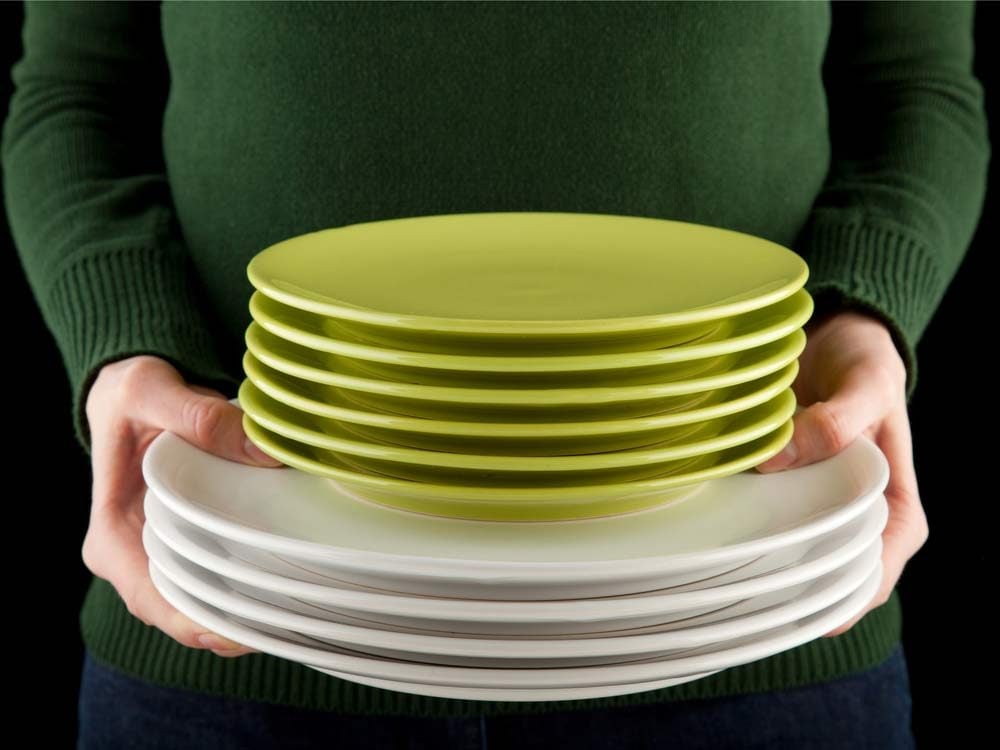
Learn from what works
We all want our children to be healthy and happy, but food—the very thing that should nourish the next generation—has become a battleground for many families, and the source of much confusion and controversy in the media. According to the results of a major worldwide health study published in The Lancet, if you are a child born in Japan today, you are projected to enjoy both the longest life and the healthiest life, and lifestyle and eating patterns are a big reason. Because even as childhood obesity and incidences of diabetes skyrocket around the world, Japanese childhood obesity levels have historically been much lower, and have in fact been declining overall in recent years. What are their secrets? As parents, my husband William and I needed to know. Based on our research and interviews with world’s experts, doctors and nutritionists, we distilled the lessons into seven practical steps that all parents can take to nurture their child’s health.

1. Make family meals more satisfying
Japanese-style eating is very efficient in that it’s both filling and it delivers a high-quality nutrient package. When you fill up on the good stuff your body needs, you’ll naturally have fewer cravings (and less room) for junk. But you don’t have to eat seaweed, sushi, and tofu to nourish a healthy child—just tweak your family food habits in a more healthy direction. Serve more plant-based foods like fruits, vegetables, beans, whole grains, and healthy fats, like heart-healthy omega 3-rich fish, and less processed food with added sugars and salt. This food pattern is relatively low in calories, high in nutrients, and more efficiently filling by being lower in calorie density or “calories per bite.” This will help minimize the risks of obesity and the hosts of illnesses it triggers, and maximize the probability of a long, healthy life. One secret: Japan’s default meal foundation is rice, much more than bread or pasta. The advantage of Japanese-style short-grain rice, preferably brown, or the incredibly good tasting haiga partially milled rice, is that it is water-rich when cooked, fluffy, and super-filling, and much lower in calorie density than bread. All that belly-filling rice might also displace less healthy foods and reduce the overall number of calories eaten.
These tasty recipes combine your favourite seafood with nature’s best brain-boosting ingredients.

2. Celebrate eating—along with flexible restraint
Encourage your child to enjoy occasional treats and snacks—but in the proper amounts and frequencies, which are much smaller and less frequent in Japan than those that are typical in the West. The nutritionist Tomomi Takahashi of the Kaji Sakura Nursery School in Hokkaido, has great advice for all parents. “You don’t need to try so hard,” she says. “Have a relaxed attitude, so your child can relax and be comfortable eating. Show your child that you enjoy eating, and the food tastes wonderful.” She stresses the importance of dining together. “Even when you’re busy, set a specific meal time so you can sit down and eat with your child at least once a day,” she says, adding: “Cook your meals with love, and it will resonate in the child’s heart. Feel the joy of eating together with your child.” Research suggests that parents should “lighten up” about their children’s eating habits, cut out food stress and pressure, and just enjoy eating together as a family.
Check out these 10 Secrets of Working Moms Who Cook Dinner Every Night.

3. Encourage your child to explore new foods
Children’s food likes and dislikes change over time, and parents can gently steer them towards healthier patterns simply by exposing them to a wide variety of choices and by setting an example. The earlier and wider a child’s experience with sampling new healthy foods, the healthier their diet will become through childhood. Repeated opportunities for a child to sample new foods leads to their trying more, eating more, and liking more. This insight can inspire you to continue to tempt your children with new tastes over time, because their taste can mature, expand, and change constantly as they grow up—right into adulthood. Infants may need only one exposure to a new food to sharply increase their eating and liking it; and children over age two might need significantly more—up to 20 exposures. So don’t give up too early. Keep offering new foods, even small “tasting” samples—without pressure. As my grandmother Tsune often said, echoing a bit of Japanese folk wisdom, “a new food prolongs one’s life.”
Try these 10 ways to get creative with vegetables and give your diet a healthy kick-start.

4. Rebalance your dinner plate with Japanese-style portions
By now, most of us know that the average serving sizes of restaurant meals has super-sized out of control over the past 20 years, causing us to mindlessly over-eat almost all the time. How can you normalize portions? Simply give your larger serving plates a break (put them up on the highest shelf) and serve meals on smaller plates, like the side, salad, bread plates, you already have—plates about four- to six-inches in diameter, and the bowls about one- to three-inches, holding about 100 to 200 ml (or about three-quarters of a cup). The idea of using smaller plates is gathering momentum at various dietary research organizations. Jennifer Orlet Fisher, PhD, director of the Temple University Center for Obesity Research and Education and its Family Eating Laboratory, found that children tend to not serve themselves huge portions when left to their own devices. She feels that offering children smaller plates and letting them take their own food could be helpful in keeping portion size and appetite in proper perspective. The lessons from Japan: Serve food on smaller plates—but don’t skimp on fruit and veggies!
Here are 11 Eating Habits to Help You Lose Weight.

5. Get your child running and jumping
It’s hard to pry kids away from their video games and other tech temptations, but they really need a minimum of 60 minutes of moderate-intensity physical activity per day. The key is to make it fun! Try power-walking to school together or building in time for free play in the playground. Researchers have found that Japan has exceptionally high rates (98.3 percent) of children walking or biking to school compared with other similar-income countries, which is obviously linked with Japan’s low levels of childhood obesity. The World Health Organization reports that appropriate levels of physical activity for 5 to 17-year-olds contribute to the development of healthy bones, muscles, and joints, as well as a healthy cardiovascular system, co-ordination, and movement control, improving management of symptoms of anxiety and depression, and providing opportunities for a child’s self-expression, social interaction and integration. The fact is that children love to play. It’s natural for them, and they will find all kinds of ways to play if given the opportunity. Send your child outside to play in safe environments. The wisdom of this, and the research to support it, is clear: Children are biologically engineered to move, run, and jump, and when they do, they perform better at school, are happier and more focused. And the health benefits of this lifestyle habit may be substantial in helping to give our children the longest, healthiest lives possible.

6. Nurture a wrap-around family lifestyle
Create a wrap-around home environment that supports healthy food and lifestyle choices. Eat family meals together regularly. Practice healthy, delicious cooking, and joyful eating as an example for your children. The idea of bringing children into the kitchen as a pathway to health was supported by a study of a group of 6- to 10-year-old children published in the August 2014 journal Appetite. The study says that involving children in the preparation of healthy and balanced meals could be a valuable intervention strategy to improve their diets. The idea of eating family meals together is a practice that many families around the world, including in Japan, are finding harder and harder to pull off, as parents work later and after-school schedules get increasingly booked up. But it is a goal worth striving for, because the potential health benefits for children appear to be huge. A research paper published in the November 2014 issue of Pediatrics reported that warmth, group enjoyment, and parental positive reinforcement at family meals were significantly associated with reduced risk of childhood overweight and obesity.

7. Don’t be shy about being the boss
Some parents are uncomfortable exercising authority over their child, but when it comes relaying food and lifestyle habits to your children, Japanese parents find success using an authoritative rather than an authoritarian approach. Authoritative parenting, pioneered in the early 1960s by the psychologist Diana Baumrind, is an easy, effective way to be the boss your children need without resorting to phrases like “because I said so,” which can erode their trust. With authoritative parenting, you establish guidelines and rules that your children are expected to follow, listen to questions, and be nurturing and strategic in your approach to discipline. You are assertive, but not intrusive and restrictive. You are supportive, rather than punitive. “The authoritative model of discipline,” Baumrind wrote, “is characterized by the use of firm control contingently applied and justified by rational explanation of consistently enforced rules.” It is possible for us as parents, anywhere in the world, to build an environment for children that, although far from perfect, can inspire them to adopt tastes and habits that will increase their chances of enjoying as long and healthy a life as it’s possible for them to experience.
Naomi Moriyama is the author of Secrets of the World’s Healthiest Children.